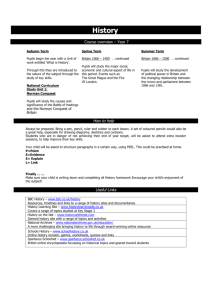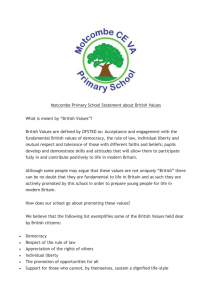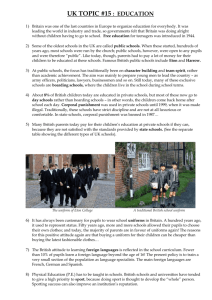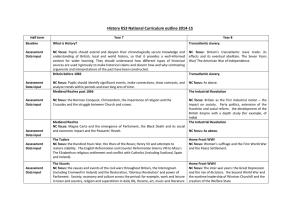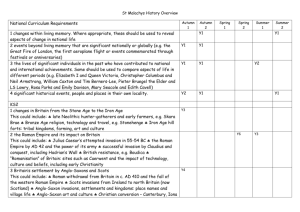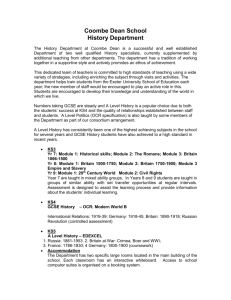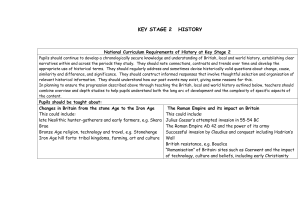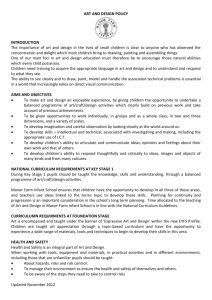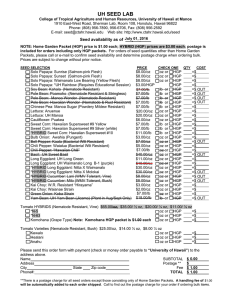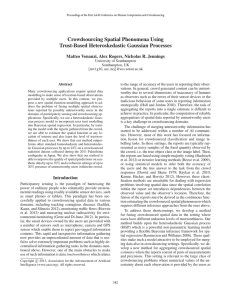File - Southglade Primary SCHOOL
advertisement
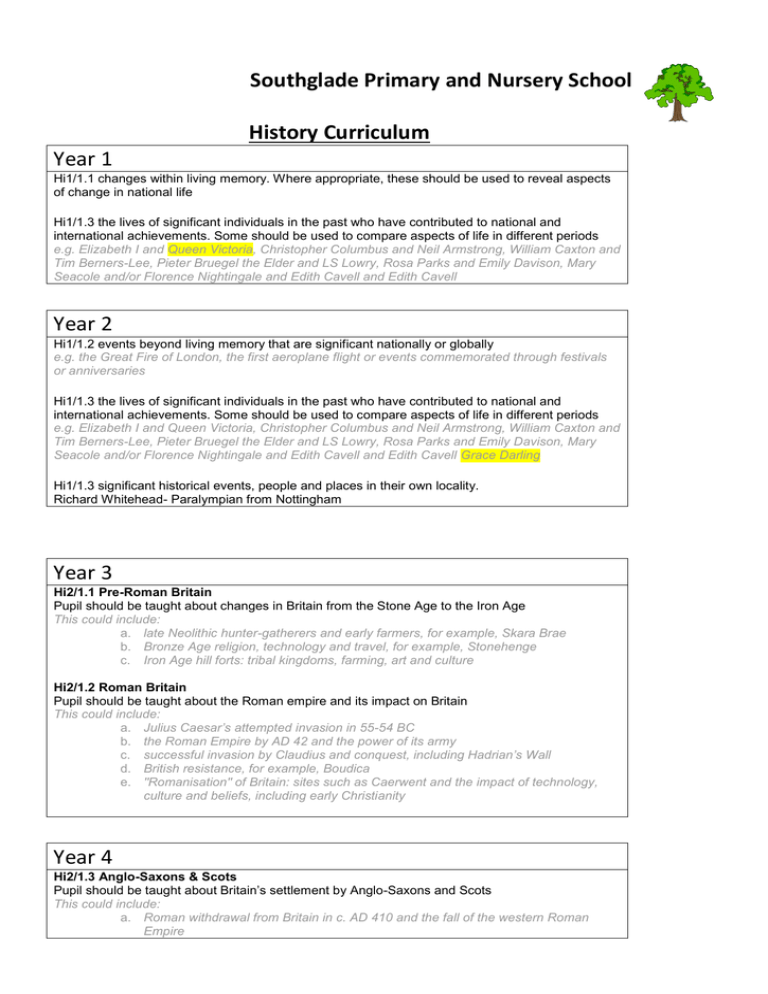
Southglade Primary and Nursery School History Curriculum Year 1 Hi1/1.1 changes within living memory. Where appropriate, these should be used to reveal aspects of change in national life Hi1/1.3 the lives of significant individuals in the past who have contributed to national and international achievements. Some should be used to compare aspects of life in different periods e.g. Elizabeth I and Queen Victoria, Christopher Columbus and Neil Armstrong, William Caxton and Tim Berners-Lee, Pieter Bruegel the Elder and LS Lowry, Rosa Parks and Emily Davison, Mary Seacole and/or Florence Nightingale and Edith Cavell and Edith Cavell Year 2 Hi1/1.2 events beyond living memory that are significant nationally or globally e.g. the Great Fire of London, the first aeroplane flight or events commemorated through festivals or anniversaries Hi1/1.3 the lives of significant individuals in the past who have contributed to national and international achievements. Some should be used to compare aspects of life in different periods e.g. Elizabeth I and Queen Victoria, Christopher Columbus and Neil Armstrong, William Caxton and Tim Berners-Lee, Pieter Bruegel the Elder and LS Lowry, Rosa Parks and Emily Davison, Mary Seacole and/or Florence Nightingale and Edith Cavell and Edith Cavell Grace Darling Hi1/1.3 significant historical events, people and places in their own locality. Richard Whitehead- Paralympian from Nottingham Year 3 Hi2/1.1 Pre-Roman Britain Pupil should be taught about changes in Britain from the Stone Age to the Iron Age This could include: a. late Neolithic hunter-gatherers and early farmers, for example, Skara Brae b. Bronze Age religion, technology and travel, for example, Stonehenge c. Iron Age hill forts: tribal kingdoms, farming, art and culture Hi2/1.2 Roman Britain Pupil should be taught about the Roman empire and its impact on Britain This could include: a. Julius Caesar’s attempted invasion in 55-54 BC b. the Roman Empire by AD 42 and the power of its army c. successful invasion by Claudius and conquest, including Hadrian’s Wall d. British resistance, for example, Boudica e. "Romanisation" of Britain: sites such as Caerwent and the impact of technology, culture and beliefs, including early Christianity Year 4 Hi2/1.3 Anglo-Saxons & Scots Pupil should be taught about Britain’s settlement by Anglo-Saxons and Scots This could include: a. Roman withdrawal from Britain in c. AD 410 and the fall of the western Roman Empire b. c. d. e. Scots invasions from Ireland to north Britain (now Scotland) Anglo-Saxon invasions, settlements and kingdoms: place names and village life Anglo-Saxon art and culture Christian conversion – Canterbury, Iona and Lindisfarne Hi2/1.4 Anglo-Saxons & Vikings Pupil should be taught about the Viking and Anglo-Saxon struggle for the Kingdom of England to the time of Edward the Confessor This could include: a. Viking raids and invasion b. resistance by Alfred the Great and Athelstan, first king of England c. further Viking invasions and Danegeld d. Anglo-Saxon laws and justice e. Edward the Confessor and his death in 1066 Hi2/2.3 Ancient Civilizations Pupils should be taught about the achievements of the earliest civilizations – an overview of where and when the first civilizations appeared and a depth study of one of the following: a. Ancient Sumer; b. The Indus Valley; c. Ancient Egypt; or The Shang Dynasty of Ancient China Year 5 Hi2/2.4 Ancient Greece Pupils should be taught a study of Greek life and achievements and their influence on the western world Year 6 Hi2/2.1 Local History Pupils should be taught about an aspect of local history For example: a. a depth study linked to one of the British areas of study listed above b. a study over time tracing how several aspects of national history are reflected in the locality (this can go beyond 1066) c. a study of an aspect of history or a site dating from a period beyond 1066 that is significant in the locality. Nottingham during WW II Hi2/2.2 Extended chronological study Pupils should be taught a study of an aspect or theme in British history that extends pupils’ chronological knowledge beyond 1066 For example: a. the changing power of monarchs using case studies such as John, Anne and Victoria b. changes in an aspect of social history, such as crime and punishment from the Anglo-Saxons to the present or leisure and entertainment in the 20th Century c. the legacy of Greek or Roman culture (art, architecture or literature) on later periods in British history, including the present day d. a significant turning point in British history, for example, the first railways or the Battle of Britain, WW II Hi2/2.5 Non-European Study Pupils should be taught about a non-European society that provides contrasts with British history one study chosen from: a. early Islamic civilization, including a study of Baghdad c. AD 900; b. Mayan civilization c. AD 900; or Benin (West Africa) c. AD 900-1300
